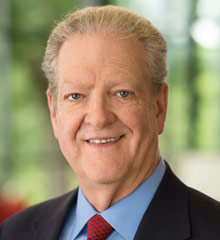Outline of 1 Chronicles
Revised by Nicholas Schaser (10/24)
1. Genealogical Introduction (1 Chronicles 1:1–9:44)
First Chronicles opens with nine chapters of lists and genealogies that trace the postexilic community’s ancestors back to AdamThe first human God created. More and point to the importance of DavidSecond king of Israel, David united the northern and southern kingdoms. More.
A. Adam to Israel (1:1–54)
The first list traces the history of Israel from Adam to Israel.
B. The Tribes of IsraelThe patriarch Jacob fathered twelve sons who became the ancestors the Twelve Tribes of Israel. Divisive political conditions led to a separation of these united tribes into the Northern and Southern Kingdoms after the death of Solomon in 931 B.C.E More (2:1-9:1)
While all twelve of Israel’s tribes are represented in these lists, the lists have been carefully arranged to emphasize the royal tribes of JudahJudah was the name of Jacob’s fourth son and one of the 12 tribes. More (David) and BenjaminA son of Jacob and tribe of Israel. More (SaulThe first king of Israel. More) as well as the priestly tribe of LeviSon of Jacob and Leah, brother to Reuben, Simeon, and Dinah. More.
C. The Restored Jerusalem Community (9:2-34)
These lists from NehemiahThe governor of Jerusalem who rebuilt the city walls after the exile. More 11:3-24 help to identify the postexilic generations as the continuation of the history just presented in chapters 1-8.
D. Saul (9:35-44)
Saul’s genealogyGenealogy involves the study and tracing of families through the generations—in short, family history. One genealogy in Genesis traces the nations descended from Noah. In the New Testament Matthew traces the ancestry of Jesus back to Abraham, while Jesus’ genealogy in the Gospel of Luke… More (9:35-44, repeated from 1 Chronicles 8:29-38) anticipates the Chronicler’s presentation of Saul’s death in chapter 10.
2. The United Monarchy, Part One: David (1 Chronicles 10:1-29:30)
In Chronicles, the reigns of David and SolomonThird king of Israel who was known for wisdom and building the first Temple. More are seen as a unity, though this is obscured by the artificial split of Chronicles into two books. The rest of 1 Chronicles narrates the first part of the united monarchy, David as Israel’s ideal king. Part two of the united monarchy begins in 2 Chronicles 1.
A. Saul (10:1-14)
Only the final chapter in the life of Israel’s first king, Saul, is presented. Here it serves as an example of exile as the result of unfaithfulness.
B. David Becomes King over All Israel (11:1-12:40)
All Israel immediately recognizes David as king.
C. David Brings the Ark to Jerusalem (13:1-16:43)
The narration of David bringing the ark of God from Kiriath-jearim to Jerusalem illustrates the Chronicler’s primary concern: the establishment of proper worship.
D. God’s Promise to David (17:1-27)
In this pivotal chapter, God promises that David will always have a son on the throne of Judah (vv. 1-15), and David responds with thanks and praise (vv. 16-27).
E. David’s Wars (18:1-20:8)
The LORD makes David victorious over neighboring nations, and David gains wealth that will go toward building the TempleThe Jerusalem temple, unlike the tabernacle, was a permanent structure, although (like the tabernacle) it was a place of worship and religious activity. On one occasion Jesus felt such activity was unacceptable and, as reported in all four Gospels, drove from the temple those engaged… More.
F. David Prepares for the Temple (21:1-29:30)
The shared segment of David and Solomon is presented with the preparations for the building of the Temple in chapters 21-22 and 28-29, framing David’s organization of the Temple personnel in chapters 23-27.

